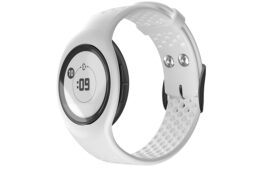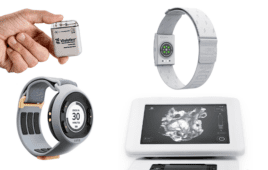
(Image courtesy of Joshua Sortino on Unsplash)
You can add internet connectivity to older devices if you identify the right combination of business goals, customer needs and technology solutions.
Piotr Sokolowski, S3 Connected Health
Many medtech companies require their devices to be connected to the internet. Connectivity can be added to the thousands of pre-existing devices in the field. Here are some guidelines to help you succeed.
Identify your business needs
You’ll need to identify a genuine business reason to justify the effort required from R&D, regulatory, operations and other functions. For internal stakeholders to back your project, explain how collecting data on the device will benefit the company. Offering tangible gains for particular departments is crucial for success here.
Examples of areas that can achieve tangible improvements from device data include:
- Preventive maintenance.
- Context-based technical support and user training.
- Remote firmware upgrades.
- Device and consumables tracking.
Start with areas that can directly translate into reduced effort for internal support functions, like maintenance and technical support, or lead to improved outcomes and efficiency for device users.
Often, after launching the first connectivity project and showing specific benefits, other stakeholders will see the value information brings and request other types of data to be delivered over your new connectivity mechanisms. This data can be used to direct future enhancements to equipment, improve product differentiation, establish more meaningful customer engagement and service other stakeholders in the device ecosystem. These follow-on features can collectively deliver significant return on investment from the project.
Get clinical customers on board
Hospitals using your equipment may hesitate to allow modifications for fear of taking on additional work and adding to their risk of cybersecurity threats. After all, they are operating within the confines of established clinical protocols, strict IT requirements, and overloaded clinical staff.
To succeed and demonstrate the real value of connectivity, show how their real unmet needs can be addressed using data and strive to seamlessly integrate these upgrades into the clinical environment.
The resulting benefits for clinicians and clinical managers can include:
- Reduced device downtime and increased use.
- Improved treatment set-up and patient preparation.
- Improved patient safety.
- Increased clinical performance.
- Reduced consumable usage.
Practical considerations
The final hurdle is introducing connectivity and data collection technology into the device as seamlessly as possible. This means having the least possible impact on the equipment design and associated processes (e.g. manufacturing) and with minimum regulatory burden resulting from the change. The following aspects must be considered:
- Impact on equipment design: The connectivity component (whether internal or external) will need to meet a number of diverse requirements related to aesthetics, mechanical, electromagnetic compatibility, power consumption, heat dissipation, hardware and software integration/separation, bill-of-materials cost, etc. It requires excellent engineering skills and innovative thinking; there is much less design freedom than in new designs.
- Impact on manufacturing and operations: Adding connectivity will mean adding to an established component supply chain, manufacturing line and operations processes; be sure to minimize the impact of this. Re-using existing components and suppliers, complying with their Design for Manufacturability (DFM) and other Design for Excellence (DFX) rules, and, most of all, containing the design change within particular subsystems helps to reduce the impact.
- Selecting the right communication method: There is a wide selection of standards from Zigbee and Bluetooth through WiFi, LoRaWAN, cellular IoT, to WPANs and 5G. However, options will be reduced by the product constraints mentioned above and limited by the environment in which the device resides. Aspects not commonly considered include signal propagation through complex building structures; interoperability with existing protocols, especially WiFi; electromagnetic compatibility with existing medical devices; cellular network coverage or the need to install additional gateway devices; and the total running costs of connectivity, including cellular IoT data plans.
- Cybersecurity framework, for which the connectivity function must meet requirements in three domains:
-
- Technical, including end-to-end data encryption and other security controls.
- Regulatory, including cybersecurity guidelines and patient data privacy standards.
- Environment, including fitting into customers’ cybersecurity frameworks to support ongoing security analysis, software updates, and vulnerability management.
- Integration with internal and external systems: Connected equipment will be integrated with supplementary functions like identity management, secure operations, inventory management, customer care and others that guarantee secure and uninterrupted data acquisition from the entire installed base of devices. Without these processes, the connectivity project is likely to remain a limited pilot installation.
Adding connectivity to existing medical equipment is possible, but it requires combining business, clinical, regulatory and technology perspectives as well as meaningful engagement with all stakeholders.
Piotr Sokolowski is head of services strategy for medtech solutions at S3 Connected Health. He has almost 20 years’ experience in designing medical devices and device-based services.
The opinions expressed in this blog post are the author’s only and do not necessarily reflect those of Medical Design and Outsourcing or its employees.




